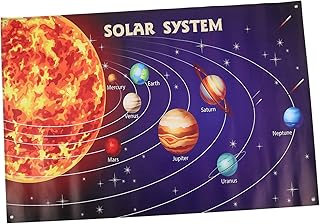Mars, the enigmatic red planet, has long perplexed planetary scientists not only for its potential history of water and life but also for its significantly smaller mass compared to Earth and Venus. This disparity in mass has led experts to ponder over the underlying reasons behind Mars’ diminutive size, a puzzle that has persisted for decades.
George Wetherill, a planetary scientist at the Carnegie Institution, coined the term the ‘small Mars’ problem to encapsulate the mystery surrounding the red planet’s mass, which is only a fraction of Earth’s. Various hypotheses have been proposed to explain this anomaly, yet none have been universally accepted by the scientific community due to the complexity of the issue.
Matthew Clement, a planetary scientist at Johns Hopkins University, highlighted the challenge in reconciling the distribution of material in the early solar system and why Mars failed to accumulate sufficient mass like Earth and Venus. The implications of Mars’ small mass extend beyond mere curiosity, raising questions about its ability to retain water and sustain habitable conditions.
Sean Raymond, an astrophysicist, emphasized the critical role that mass plays in shaping a planet’s geological evolution and atmospheric stability. Mars’ limited mass not only curtailed its volcanic activity but also made it vulnerable to atmospheric erosion by solar winds, contributing to its current desolate state.
Stephen Kane, a planetary geophysicist, pointed out that Mars’ small size hindered its geological processes, ultimately impacting its atmospheric composition and ability to support life. The early history of the solar system, particularly the dynamics involving Jupiter’s migration and the distribution of material in the asteroid belt, likely influenced Mars’ stunted growth.
Three main hypotheses – the Grand Tack Model, the Main Asteroid Belt model, and the early instability model – have been proposed to explain Mars’ reduced mass. Each theory offers a unique perspective on the factors that may have prevented Mars from attaining a size comparable to Earth and Venus, underscoring the complexity of planetary formation.
Unlocking the mystery of Mars’ small mass is not only a scientific endeavor but also a key to understanding the broader processes that govern planetary evolution. By studying the dust-to-planet formation dynamics in the solar system and beyond, researchers aim to shed light on the mechanisms that shaped Mars and its cosmic neighbors.
As we delve deeper into the origins of our solar system and the diversity of planetary architectures, the case of Mars stands out as a compelling enigma that holds clues to the fundamental principles of planetary formation. By unraveling the complexities of Mars’ past, scientists hope to gain insights that may have far-reaching implications for astrobiology and our understanding of habitable worlds.
📰 Related Articles
- Upskilling ‘Rising Talent’ Key to Small Business Workforce Success
- Study Reveals LV Mass Regression Key to Post-SAVR Prognosis
- SEO Evolution in AI Age: Key Strategies for Online Visibility
- Record-Keeping Evolution: File Notes Key in Post-SoA Financial Advice
- Live Music Industry’s Dynamic Evolution and Key Developments Unveiled






